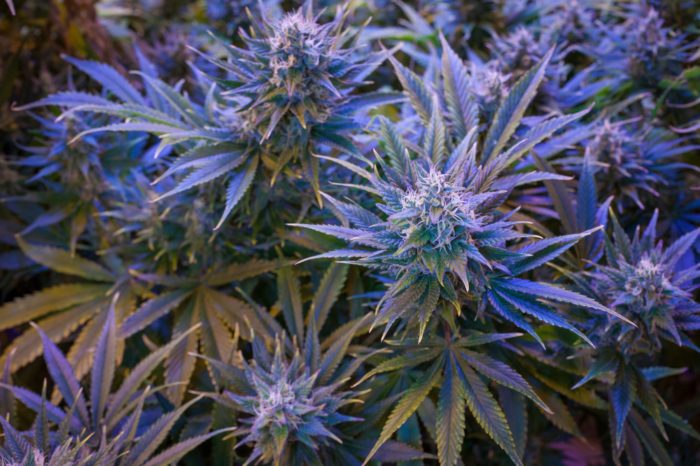Holding in a toke is an age-old practice in cannabis circles, meant to increase the high. But, it doesn’t work.
We all want to make our stash go further. The idea of holding in your toke for longer makes sense on paper, but, it doesn’t hold up to scientific scrutiny. Even if you’re a Tour de France cyclist, human lungs aren’t really all that efficient. The air we breathe contains approximately twenty percent oxygen. When exhaled, it still contains about fifteen percent oxygen. It turns out that we’re not all that efficient at absorbing oxygen, and this makes sense from an evolutionary perspective. Air is almost always plentiful at all times, and we’ve evolved to breathe rhythmically.
Other animals are different. Whales absorb about ninety percent of what they inhale. With an evolutionary pressure on lung efficiency due to their marine environment, whales would no doubt get their money’s worth from holding in a toke. But sadly, it won’t make much difference to us humans.
Here’s Why You Don’t Have to Hold Your Toke
Another argument that counters the widely-held belief that holding in a toke enhances the effects of cannabis is the fact that THC is absorbed almost immediately upon inhalation into the lungs.
In a study [1]Sharma, P., Murthy, P., & Bharath, M. M. (2012). Chemistry, metabolism, and toxicology of cannabis: clinical implications. Iranian journal of psychiatry, 7(4), 149–156.published in The Iranian Journal of Psychiatry (2012), researchers studied the metabolism and toxicology of cannabis. Researchers found that “following inhalation,▵9-THC is detectable in plasma within seconds after the first puff.”
For those that claim to feel enhanced effects from holding in a toke, what’s likely going on is that they are depriving their brains of oxygen. This can often lead to a lightheaded feeling that’s then accentuated by any carbon monoxide or toxins in the cannabis smoke.
How to Get Max Bioavailability of Cannabinoids
Few consumers consider bioavailability when purchasing cannabis, but it’s an essential element. This is the very reason you are consuming cannabis. So, to increase bioavailability, rather than holding in a toke, try edibles. Here, a variety of factors are responsible for absorption rates. These include the quantity of food in the gut, and whether fat is present in sufficient quantities to bind with the cannabinoids.
The issue of bioavailability is important since the medicinal effects of cannabis depend on the underlying synergies between compounds. A study [2]Russo E. B. (2011). Taming THC: potential cannabis synergy and phytocannabinoid-terpenoid entourage effects. British journal of pharmacology, 163(7), 1344–1364. … Continue reading published in the British Journal of Pharmacology (2011), identified the importance of the full-plant spectrum and ensuring maximum absorption of all compounds by describing the many synergies that exist between terpenes and cannabinoids that promote the medicinal benefits yet further.
You’ll Get More From Edibles Than Holding a Toke
Many people opt for alternatives due to health reasons. But, inhalation is the most efficient method of administration for absorbing cannabinoids. The differences in bioavailability between inhaling cannabis and consuming it in edible form are substantial. A study [3]McGilveray I. J. (2005). Pharmacokinetics of cannabinoids. Pain research & management, 10 Suppl A, 15A–22A. https://doi.org/10.1155/2005/242516 published in Pain Resolution Management (2005) found that the bioavailability of THC in smoked cannabis averages thirty percent. Researchers noted that in edible form, absorption rates range from four to twelve percent. However, it is worth noting that in edible form, the THC converts from Delta 9 to the more potent 11-Hydroxy-THC.
There are several things that patients can do to help increase bioavailability in edibles. The first and most obvious is to consume a high-fat meal. A study [4]Taylor, L., Gidal, B., Blakey, G. et al. A Phase I, Randomized, Double-Blind, Placebo-Controlled, Single Ascending Dose, Multiple Dose, and Food Effect Trial of the Safety, Tolerability and … Continue reading published in CNS Drugs (2018), investigated the bioavailability of CBD when ingested in oral form. Researchers found that when ingested with a high-fat meal, “its bioavailability increased by approximately four- to fivefold.” Cannabinoids are fat-soluble molecules, and without the presence of fat in the intestinal tract, these are not absorbed very effectively.
What is Nanoemulsion Preparation?
When it comes to the bioavailability of cannabinoids in the gut, rates of absorption vary tremendously. One of the main hurdles that many manufacturers face is standardizing doses. Basically, this means the development of reliable and consistent effects with the same dose over time. In a study [5]Nakano Y, Tajima M, Sugiyama E, Sato V, H, Sato H: Development of a Novel Nanoemulsion Formulation to Improve Intestinal Absorption of Cannabidiol. Med Cannabis Cannabinoids 2019;2:35-42. doi: … Continue reading published in Medical Cannabis and Cannabinoids (2019), researchers documented the process of developing a novel nanoemulsion preparation of CBD (CBD-NE) designed to improve absorption. In the rat study, researchers administered the CBD oil orally to rats and collected blood samples over time. They found that the administration of CBD-NE “extensively enhanced the absorption of CBD and improved its bioavailability.”
The researchers also found that absorption rates of CBD were not affected by bile excretion rates. Basically, bile improves digestion by breaking down fats to ultimately enhance absorption. The fact that CBD absorption rates remained unaffected by the absence of bile in the rats suggests enhanced robustness and less interdependence on the presence of food to ensure optimal uptake of the CBD.
This may help mitigate the common issue of variances in dosing among patients. By minimizing the dependence of cofactors for absorption, new blends like nanoemulsion preparations of CBD may help ensure more consistent absorption rates, and thus more consistent effects from a given dose of CBD.
So, in the end, holding a toke is not likely to get you measurably more cannabinoid exposure, for the reasons discussed above. You can skip the coughing fit that comes from holding hot smoke in your lungs.
References







